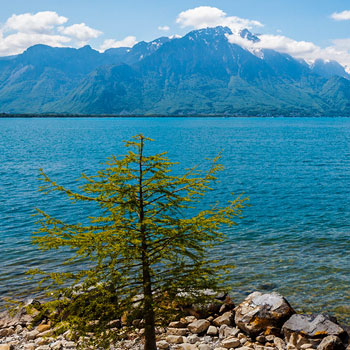Two Wilfrid Laurier University-led citizen science research projects are set to receive funding from Global Water Futures. The projects will help monitor changes that are occurring in Canada’s North.
Colin Robertson, associate professor in Laurier’s Department of Geography and Environmental Studies, is leading the project entitled Global Water Citizenship (GWC). While community-based monitoring and citizen science programs have been developed to help track environmental changes around the globe, these systems often are not used to inform local decision-making and planning or as inputs to environmental science and modelling. Robertson’s project will build the technical and social infrastructure to support this type of information exchange between local communities, scientists and local decision-makers in northern Canada.
“There’s a lot of great community-based and locally engaged research happening in northern communities,” said Robertson. “We’re focused on integrating existing networks of data collection and putting them into a common resource where community leaders, scientists and policy makers can access and use this data to inform their decisions.”
The Global Water Citizenship project will include collaboration with faculty at the University of Waterloo and the University of Arizona, in addition to partners at the Government of the Northwest Territories, ESRI Canada, and the Gordon Foundation’s Mackenzie DataStream initiative.
Laurier Geography and Environmental Studies professor Brent Wolfe and assistant professor Jason Venkiteswaran are leading the project entitled SAMMS: Sub-Arctic Metal Mobility Study. The study will build upon previous research in the Slave River Delta, where high concentrations of arsenic were discovered in lake sediments corresponding to when emissions from Giant Mine in Yellowknife were greatest. The new study contributes to an understanding of how legacy pollutants from mining activity may move through the landscape, potentially affecting drinking water quality and aquatic organisms in a negative way.
“We believe we found evidence of pollution from Giant Mine in the Slave River Delta, which is a lot farther from the mine than previously was known,” said Wolfe. “This finding creates some concerns, so our next project will take a comprehensive look at lakes and their catchments northwest of Yellowknife, where some of our lake sediment core records also show recent increases in the levels of arsenic.”
“We need to learn more about how arsenic is getting into these lakes,” said Venkiteswaran. “SAMMS will use field and lab studies and modelling to determine how and why mine-legacy pollutants stored in catchments may still be entering lakes and the role of climate change in moving these pollutants around.”
Wolfe and Venkiteswaran’s project will include collaboration with faculty from the University of Saskatchewan, the University of Waterloo, the University of Ottawa and the Norwegian Institute of Water Research, as well as a number of northern agencies and Indigenous organizations.
Global Water Futures is a seven-year, University of Saskatchewan-led research program, in partnership with Laurier, the University of Waterloo and McMaster University, established within the Global Institute for Water Security in 2016 and funded in part by a $77.8-million grant from the Canada First Research Excellence Fund. The research goal is to transform the way communities, governments and industries in Canada and other cold regions of the world prepare for and manage increasing water-related threats.









